B.R. Ambedkar
Early Life of B.R. Ambedkar
Bhimarao Ambedkar more popularly known as Dr. B.R. Ambedkar was born on 14 April 1891 in Mhow in Madhya Pradesh. Ambedkar was born in a lower middle class family belonging to the Mahar caste. He was born in the military cantonment of Mhow town. Ambedkar was born to Ramji Maloji Sakpal and Bhimabai and was the 14th child in the family. He was from a strong Marathi background and also his community Mahar was treated as the untouchables by the upper class and they were subjected to a very clear socio economic discrimination. Ambedkar's ancestors were all employed in the army of the British East India Company and his father worked as a Subedar in the British Indian Army at Mhow cantonment. Ramji Sakpal, father of Ambedkar, being the follower of the religious and philosophical community inspired his children to read the books of Hindu classics.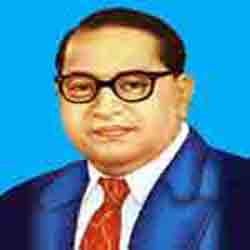
Once Ambedkar's father got retired in 1894 they shifted from Mhow and went to Satara. After moving to Satara Ambedkars mother fell ill and she passed away. Here Ambedkar got the opportunity to study in a local school where he still faced the problem of discrimination by the upper class. Four years later after Ambedkars mothers death his father was remarried and then they shifted from Satara to Bombay. But however the children were all taken care of by one of their paternal aunt. Three sons – Balaram, Anandrao and Bhimrao – and two daughters – Manjula and Tulasa – of the Ambedkars would go on to survive them. It was in Bomaby Ambedkar finished his Matriculation and got graduated to high school. After clearing all the exams in merit Ambedkar also recieved scholarship from Gayakwad ruler of Baroda, Sahyaji Rao III which was about a sum of 25 Rs. Ambedkar graduated from the Bombay University, at the Elphinstone College in 1912 were he opted for Political Science and Economics as his major subjects.
Ambedkar made up his mind to use his scholarship to go to USA and do his higher studies. His father passed away in 1912 in Bomaby. Once he was back from US Ambedkar was appointed as the Defence secretary to the King of Baroda. Even as the Defence Secretary Ambedkar faced a lot of problem as untouchable and were looked down by the upper class. With the help of the former Bombay Governor Lord Sydenham, Ambedkar obtained the job as a professor of political economy at the Sydenham College of Commerce and Economics in Bombay. Ambedkar decided to further continue his studies and so in 1920 he went to England at his own expenses and it was here he was awarded honor of D.Sc by the London University. From here he went to the University of Bonn in Germany to study Economics and on 8 June, 1927, he was awarded a Doctorate by the University of Columbia.
Dalit Movement
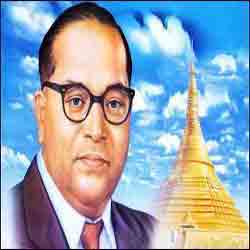 Once he was back in India Bhimrao Ambedkar became firm on fighting for the caste discrimination. When Ambedkar got an opportunity to attest before the Southborough Committee, involved in the drafting of the Government of India Act 1919, he put forth his view on there being a separate electoral system for the Untouchables and lower caste people. He also came up with the idea of reservations for Dalits and other religious communities. Ambedkar wanted the people to know about the prevailing social evils and their effects. So he tried reaching people by launching a newspaper called "Mooknayaka" meaning the leader of the silent. This effort of Ambedkar was assisted by Shahaji II (1874–1922), Maharaja of Kolhapur. He also came up with other periodicals like Bahishkrit Bharat, and Equality Janta. At the time when Ambedkar was practicing law in the Bombay High Court, he by all means tried to educate and uplift the untouchables.
Once he was back in India Bhimrao Ambedkar became firm on fighting for the caste discrimination. When Ambedkar got an opportunity to attest before the Southborough Committee, involved in the drafting of the Government of India Act 1919, he put forth his view on there being a separate electoral system for the Untouchables and lower caste people. He also came up with the idea of reservations for Dalits and other religious communities. Ambedkar wanted the people to know about the prevailing social evils and their effects. So he tried reaching people by launching a newspaper called "Mooknayaka" meaning the leader of the silent. This effort of Ambedkar was assisted by Shahaji II (1874–1922), Maharaja of Kolhapur. He also came up with other periodicals like Bahishkrit Bharat, and Equality Janta. At the time when Ambedkar was practicing law in the Bombay High Court, he by all means tried to educate and uplift the untouchables. In 1926 when three non Brahmin leaders fought with the Brahmin community stating that they are highly responsible for spoiling India under caste system. Ambedkar tried defending them in this issue but however finally they were sued for libel. Under the leadership of Ambedkar a Satyagraha was conducted in Mahad to fight for the right of the untouchable community to draw water from the main water tank of the town. He also fought for the right of the untouchables to enter Hindu temples. He was appointed to the Bombay Presidency Committee to work with the all-European Simon Commission in 1925. But however the reports of this commission were not considered by the Indians and so Ambedkar himself wrote a separate set of recommendations for the future Constitution of India.
Political career
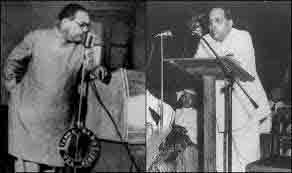 As his entry to the politics Ambedkar found the Independent Labor Party in 1936 and successfully won nearly 15 sets in the 1937 elections to the Central Legislative Assembly. The Independent Labor Party was transformed into All India Scheduled Castes Federation by Ambedkar. But however it did not really fairs well in the elections held in 1946 for the Constituent Assembly of India. Ambedkar protested against the idea of Mahatma Gandhi and the Congress party to refer the untouchable community as Harijans. Ambedkar was appointed on the Defence Advisory Committee and the Viceroy's Executive Council as Minister for Labor. Ambedkar takes the credit of being free India's first, Law Minister and chairman of the committee responsible to draft a constitution.
As his entry to the politics Ambedkar found the Independent Labor Party in 1936 and successfully won nearly 15 sets in the 1937 elections to the Central Legislative Assembly. The Independent Labor Party was transformed into All India Scheduled Castes Federation by Ambedkar. But however it did not really fairs well in the elections held in 1946 for the Constituent Assembly of India. Ambedkar protested against the idea of Mahatma Gandhi and the Congress party to refer the untouchable community as Harijans. Ambedkar was appointed on the Defence Advisory Committee and the Viceroy's Executive Council as Minister for Labor. Ambedkar takes the credit of being free India's first, Law Minister and chairman of the committee responsible to draft a constitution.Framing of India's Constitution
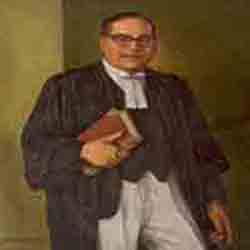 After the independence of India Bhimrao Ambedkar and becoming of the Law Minister, he was also assigned by the Government to be the Chairman of the Constitution Drafting Committee involved in the release of India's New Constitution. Being an efficient jurist Ambedkar was very keen on the fact that there will be no unity in the country unless and until the difference among the classes were not met. The text prepared by Ambedkar provided constitutional guarantees and protections for a wide range of civil liberties for individual citizens, including freedom of religion, the abolition of untouchability and the outlawing of all forms of discrimination.
After the independence of India Bhimrao Ambedkar and becoming of the Law Minister, he was also assigned by the Government to be the Chairman of the Constitution Drafting Committee involved in the release of India's New Constitution. Being an efficient jurist Ambedkar was very keen on the fact that there will be no unity in the country unless and until the difference among the classes were not met. The text prepared by Ambedkar provided constitutional guarantees and protections for a wide range of civil liberties for individual citizens, including freedom of religion, the abolition of untouchability and the outlawing of all forms of discrimination. Ambedkar has made certain points very clear where he insisted on substantial economic and social rights for women, and also won the Assembly's support for introducing a system of reservations of jobs in the civil services, schools and colleges for members of scheduled castes and scheduled tribes and Other Backward Class, a system akin to firm action. Finally the Indian Constitution drafted by Ambedkar was adopted on 6 November 1949 by the Constituent Assembly. Following the interruption of the Hindu code bill in the parliament, Ambedkar resigned from the cabinet in 1951. This bill was meant to propound gender equality in the laws of inheritance and marriage. After his resignation from the cabinet he contested for the Lok Sabha election in 1952 from the constituency of North Central Bombay. But unfortunately he lost to his opponent Narayan Sadoba Kajrolkar, who polled 138137 votes compared to Ambedkar's 123576 votes. In the same year he was appointed as the member of the Rajya Sabha of Parliament till his death. He was the first person to do a doctorate in economics degree abroad.
Conversion to Buddhism
 In 1950 Ambedkar got converted to Buddhism after he attended a convention in Sri Lanka of Buddhist scholars and monks.
In 1950 Ambedkar got converted to Buddhism after he attended a convention in Sri Lanka of Buddhist scholars and monks. On his return back to India he also wrote a book on Buddhism. In 1955 he founded the Bharatiya Bauddha Mahasabha.
Death
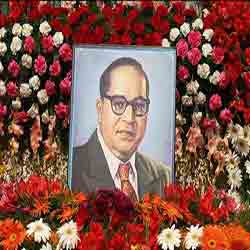 Right from 1954 Ambedkar was suffering from various ailments. His eyesight was very badly affected and he was also highly diabetic. In 1956 he passed away at his home in Delhi. As he adopted Buddhism at a much early years of his life and he was a staunch follower, his cremation was organized according to Buddhist style. The cremation ceremony of Ambedkar was attended by hundreds of thousands of supporters, activists and admirers.
Right from 1954 Ambedkar was suffering from various ailments. His eyesight was very badly affected and he was also highly diabetic. In 1956 he passed away at his home in Delhi. As he adopted Buddhism at a much early years of his life and he was a staunch follower, his cremation was organized according to Buddhist style. The cremation ceremony of Ambedkar was attended by hundreds of thousands of supporters, activists and admirers.


